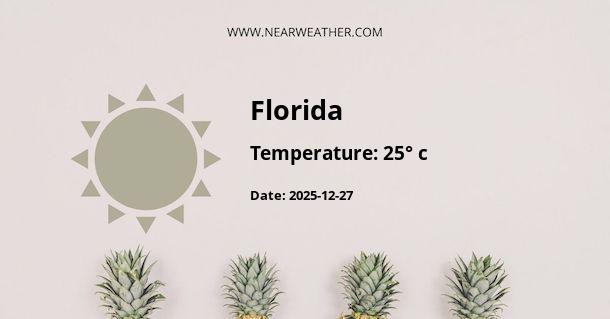Florida Climate and Weather Overview
Florida, a southeastern state in the United States, is renowned for its tropical climate, beautiful beaches, and abundant sunshine. With its vast coastline, diverse ecosystems, and unique weather patterns, Florida experiences a variety of climatic conditions throughout the year. Understanding the climate and weather in Florida is essential for residents, tourists, and businesses alike to prepare for the different seasonal variations and weather phenomena that occur in the region.
Florida Climate Zones
Florida is known for its diverse climate zones, which include the humid subtropical climate in the northern and central parts of the state, while the southern tip, including the Florida Keys, experiences a tropical climate. The state's proximity to the Gulf of Mexico and the Atlantic Ocean also influences its weather patterns, bringing about distinct variations in temperature, precipitation, and storm activity.
Florida Weather: Year-round Conditions
Florida's weather varies by season, but the state generally enjoys a warm and sunny climate for the majority of the year. Here is an overview of the weather conditions in Florida by season:
Spring (March - May)
In spring, Florida experiences mild temperatures, low humidity, and clear skies. Average temperatures range from 60°F (15.5°C) to 80°F (26.6°C) in the northern regions and can reach up to 85°F (29.4°C) in the southern areas. This season is generally considered one of the best times to visit Florida due to the pleasant weather.
Summer (June - August)
Summer in Florida is characterized by hot and humid conditions, with average temperatures ranging from 70°F (21.1°C) to 90°F (32.2°C) across the state. Afternoon thunderstorms are common, especially in the central and southern regions, providing temporary relief from the sweltering heat. The summer season also marks the official hurricane season in Florida, with the highest likelihood of tropical storms and hurricanes occurring during this time.
Fall (September - November)
During the fall months, Florida experiences gradually decreasing temperatures and lower humidity levels. Average temperatures range from 70°F (21.1°C) to 85°F (29.4°C) in the northern areas, while southern Florida maintains warmer temperatures, ranging from 75°F (23.8°C) to 90°F (32.2°C). Fall is also the tail end of the hurricane season, and residents and visitors should remain vigilant for any potential storm activity during this time.
Winter (December - February)
Winter in Florida brings milder temperatures and drier conditions, making it an attractive destination for travelers seeking refuge from colder climates. Average temperatures in the northern part of the state range from 50°F (10°C) to 70°F (21.1°C), while the southern regions maintain warmer averages of 60°F (15.5°C) to 75°F (23.8°C). While snow is extremely rare in Florida, the northern areas may experience occasional frost or freezing temperatures overnight.
Extreme Weather Events
Florida is susceptible to various extreme weather events, including hurricanes, tropical storms, thunderstorms, and tornadoes. The state's geographic location and warm waters of the Gulf of Mexico and the Atlantic Ocean create favorable conditions for the development of tropical cyclones, with the peak of the hurricane season occurring from August to October. It is crucial for residents and visitors to stay informed about potential weather hazards and to have a well-defined evacuation plan in place in the event of a major storm.
Annual Precipitation and Sunshine
Florida receives an average of 54 inches (137 cm) of precipitation annually, with the majority of the rainfall occurring during the summer months. The northern part of the state generally receives slightly higher rainfall than the southern regions. Additionally, Florida is known as the "Sunshine State," with an average of 230-260 sunny days per year, making it an ideal destination for sun-seeking travelers and outdoor enthusiasts.
Conclusion
As a state known for its diverse climate, abundant sunshine, and potential for extreme weather events, Florida offers a unique and varied experience for residents and visitors throughout the year. Whether enjoying the mild spring temperatures, basking in the summer sun, exploring the autumn foliage, or escaping the winter chill, Florida's climate and weather provide something for everyone to appreciate and prepare for.
A - Florida's Latitude is 15.033330 & Longitude is -88.833328.
A - Weather in Florida is 30° today.
A - Climate Conditions in Florida shows light rain today.
A - Humidity in Florida is 74% today.
A - Wind speed in Florida is 9.65 km/h, flowing at 337° wind direction. today.
